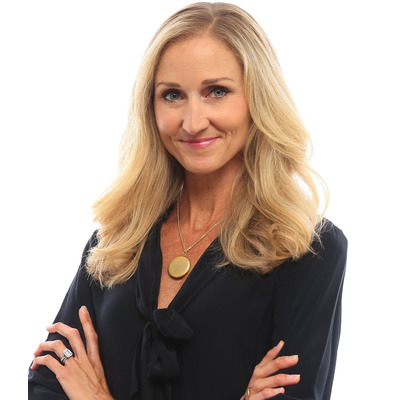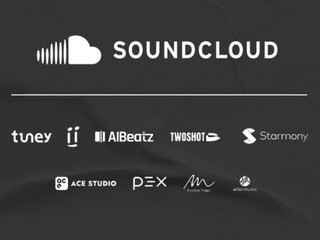

Web that users have to find on their own, why not distribute content to places
where massive audiences already exist? This is the position being pursued by
Chris Young’s fast-growing startup, Digital
Broadcasting Group (DBG). The DBG Video Network, which now includes 2,600
sites that reach over 111 million unique users, can distribute branded video content,
pre-roll ad units, and other long-form assets. What’s more, DBG helps agencies
and advertisers concept and produce original video programming. For example,
the company co-produced Kung Fu Sessions (performances and interviews with
A-list musicians) and along with Mediavest developed last year’s “The Style Series” for
Diet Coke.
Chris isn’t new to the online video industry. In 1999, he
founded Klipmart, which led the evolution of video ads running within online
banners. In 2006, the company sold to DoubleClick, which was later acquired by
Google.
I asked Chris to share some of his company’s vision as well
as describe some of the goals that online branded video content helps to
achieve.
RW: Why did you choose to create one hybrid company
(part creative agency and part video distribution platform), versus focusing on
only doing one of those really well? What are some of the benefits to
advertisers?
CY: When I started the company, I wanted it to be more
than the distribution of linear and non-linear advertising. By combining
production with distribution we could function as an ad network as well as an
innovator in the branded content space online. What this does is afford agencies
and brands the ability to partner with us as a reach vehicle for their existing
video assets as well as a one-stop-shop for concepting, producing and
distributing original longer form content. Currently we’re working with all
kinds of different people in creating shows for the Internet, whether they’re
scripted comedies, documentaries, etc. Then, we secure agencies and advertisers
to sponsor the show.
RW: It seems like online users’ attention spans are
getting shorter and shorter, especially among Generation Y. How is long-form
video performing?
CY: Whenever you use video as a tool for engagement, you
have to take into account the medium in which it is being viewed. For online
branded content, we’ve found that “long” form video at two to four minutes
captures a significant level of engagement and interaction. Generation Y might
not be watching 30 minute shows, but two to four minute webisodes, when
compared to :15 or :30 second spots, achieve three and four times the amount of
exposure for the brand.
RW: Is there a particular target audience or type of
creative that works best for long-form?
CY: The receptivity of the content among differing
demographics (Gen Y and all others audiences) is ensured by targeted
distribution of the content to demo relevant destinations, and this is where
the DBG Video Network is utilized by our clients. Our network, which was
recently measured by comScore as having a potential reach of 111 monthly unique
visitors, consists of over 2,600 sites and properties (premium Tier I and II
sites included). This is the exposure vehicle to place branded content in front
of specific audiences.
RW: What goals does your original branded content series
achieve for your marketing clients: Awareness? Purchase intent? Other?
CY: As with most online video based initiatives, the average seconds watched is a key metric
for brand exposure and important to driving awareness. What we’ve also found is
that when you offer users a series of related webisodes along with ways to
share that content, interaction spikes as well. Most of our campaigns to date
have largely been brand based with the goal of driving awareness of the
specific brands and their latest initiatives. Be on the look out for a DBG
Branded Content white paper later in the year to help the industry define
benchmarks for branded content campaigns.
RW: Walk me
through some of the results of your most impressive client video ad campaign to
date.
CY: Ha Ha. Although I would love to share our latest and
greatest metrics to our campaigns, I don’t think our clients would want us to
share that proprietary data. That said, a few months ago we finished our first
season of Style Series, which was
presented by Diet Coke, and the reaction we received from the clients—both
agency and brand side—was extremely positive. It was a three part show that
featured A-list talents such as Grammy Award Winning R&B singers Rihanna
and Robin Thicke in addition to fashion icons Cynthia Rowley, international pop
singer Natasha Bedingfield and other talents from the film and fashion world.
We filmed the talent within the Reuters’ Studio in New
York and streamed the performances and interviews within the
electronic billboards in Times Squarewww.dietcoke.com/styleseries. and
simultaneously streamed it live online and on mobile phones. You can watch the
webisodes online at
RW: When a client comes to you and says, “I need a viral
video,” how do you respond? Is a successful model really replicable?
CY: To be honest, I tell them, “That’s not us.” I’ve
always felt that if you’re going for one big viral hit, you’re missing the
inherent value of online content. Good content is always engaging, and there
are so many opportunities that spring out of creating a series of videos that
reach users on a repeat basis and hold their attention. Also, very few viral
videos are branded, and there’s a reason for that: consumers are smarter and
more aware of when they’re being sold to, so why put money where the odds are
against you and the pay-off isn’t as great as building an on-going relationship
with interested users?
(Image source: Meetinnovators.com)















